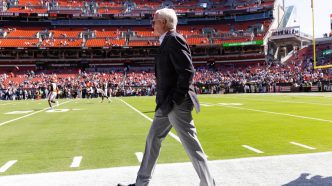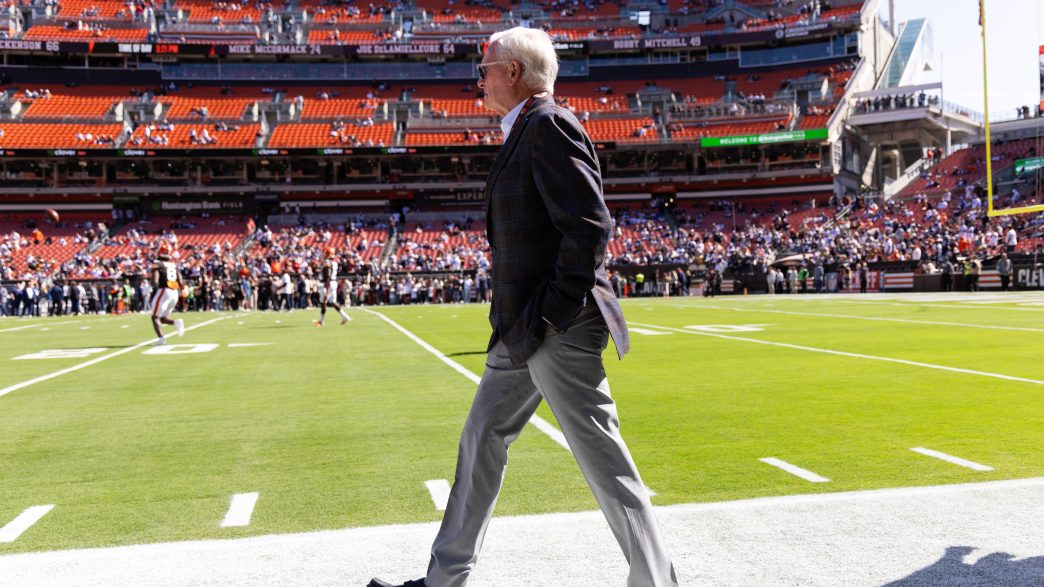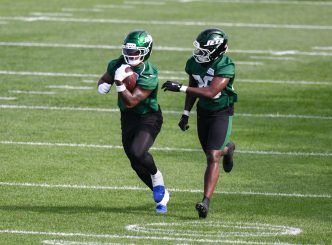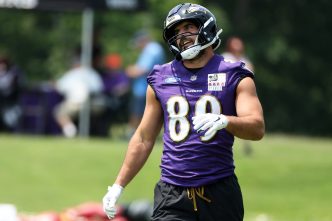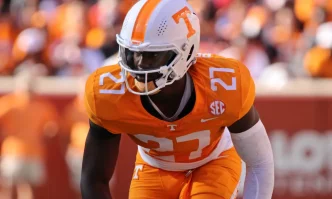The Cleveland Browns, perennial underdogs of the NFL, have not hoisted a Super Bowl trophy or even reached the AFC Championship since their inception in 1946. With only one playoff win since 1994 and a 7-10 record in 2024, the team’s on-field performance has often been a source of frustration for fans. Yet, the Browns have quietly built a financial and cultural empire, with 2024 revenue reaching $550 million (per CNBC) and a franchise valuation of $6.9 billion (Forbes), up 65% from $4.1 billion in 2020. Driven by an innovative digital strategy, a fiercely loyal fanbase, and plans for a transformative new stadium, the Browns are thriving off the field, proving that in the modern NFL, fan engagement and revenue can flourish even without championships.
A Financial Turnaround Rooted in Fandom
The Browns’ financial ascent over the past five years is remarkable:
- 2020: $4.1 billion valuation, $400 million revenue (Forbes, CNBC)
- 2021: $4.4 billion valuation, $420 million revenue
- 2022: $5.0 billion valuation, $450 million revenue
- 2023: $6.0 billion valuation, $500 million revenue
- 2024: $6.9 billion valuation, $550 million revenue
This growth coincides with a period of inconsistent performance, including a 1-15 season in 2016, a 0-16 campaign in 2017, and only one playoff appearance (2020) in the last two decades. Despite a promising 11-5 season in 2020, the Browns regressed to 7-10 in 2024, with quarterback Deshaun Watson’s $230 million contract and injury concerns drawing scrutiny. Yet, the franchise’s revenue and cultural relevance have surged, fueled by a fanbase that refuses to waver and a front office that has mastered the art of engagement.
The Dawg Pound’s Digital Revolution
The Browns’ success stems from their innovative approach to fan engagement, particularly in the digital realm. The team’s social media presence, with over 3 million followers across platforms like X, Instagram, and TikTok, ranks among the NFL’s top 10 despite their small-market status. In 2023, the Browns launched “Dawg Pound Digital,” a fan-focused app offering exclusive content, live player Q&As, and virtual tailgate events, generating $20 million in subscription revenue in its first year. Their X campaigns, including viral memes and fan-driven hashtag challenges like #BrownsBark, have boosted engagement by 40% since 2021, per Nielsen data.
Merchandise sales have also skyrocketed, with Browns gear ranking fifth in the NFL in 2024, behind only the Cowboys, Eagles, Chiefs, and 49ers. The team’s iconic orange-and-brown color scheme and retro “Brownie the Elf” logo, reintroduced as a midfield emblem in 2022, have become cultural touchstones. Sales of jerseys for stars like Myles Garrett and Nick Chubb surged 25% in 2024, despite the team’s losing record. One X user summed it up: “Browns haven’t won anything, but I’m still buying that Chubb jersey. Dawg Pound for life.”
Sponsorships and Stadium Ambitions
The Browns’ revenue is bolstered by robust sponsorships, including a $10 million annual deal with Huntington Bank and new partnerships with local brands like Great Lakes Brewing Co. Owners Dee and Jimmy Haslam have leaned into Cleveland’s blue-collar identity, hosting “Fan Fest” events that draw 50,000 attendees and generate $5 million per event. These initiatives have turned FirstEnergy Stadium (soon to be renamed under a new naming rights deal) into a year-round revenue hub, hosting concerts, college football, and community events.
The Haslams’ boldest move is their 2024 announcement of a $2.4 billion domed stadium in Brook Park, Ohio, set to open in 2029. The project, partially funded by $1.2 billion in public subsidies, promises to host NFL games, conventions, and entertainment, projecting $100 million in annual non-NFL revenue. The stadium plan has already boosted the Browns’ valuation, with analysts predicting a jump to $9 billion by 2030. “The new stadium is a game-changer,” said ESPN’s Adam Schefter. “Cleveland’s locking in revenue for decades, win or lose.”
Why Losses Don’t Dim the Dawg Pound
The Browns’ financial and cultural surge mirrors the Cowboys’ ability to thrive despite playoff droughts, but Cleveland’s story is uniquely tied to its underdog ethos. The NFL’s revenue-sharing model, distributing $12.4 billion annually in media rights through 2032, ensures a baseline for all teams, but the Browns amplify this through fan loyalty. Cleveland ranks among the top five NFL markets for TV ratings, with games averaging 15 million viewers in 2024, even during losses.
The team’s community initiatives, like the “Stay in the Game” attendance program for local schools, have deepened ties with fans, while player-led charity events, such as Garrett’s annual coat drive, resonate in a city that values grit. This loyalty translates to dollars: season ticket sales rose 15% in 2024, and premium suites at FirstEnergy Stadium sold out for the first time since 1999.
A Future Built on Faith
As the Browns’ revenue climbs, their on-field outlook remains uncertain. Watson’s inconsistent play and a tough AFC North division temper playoff hopes, but young stars like Garrett, Chubb, and cornerback Denzel Ward offer promise. Coach Kevin Stefanski’s steady leadership has kept the team competitive, and the 2025 draft could bring new talent. Fans on X are cautiously optimistic, with one posting, “$6.9 billion team, and we’re still rebuilding. But I’ll be at the new dome in ’29.”
The Browns’ story is a testament to the NFL’s ability to turn passion into profit. Like the Cowboys, they’ve built a financial empire not on Super Bowl rings but on a fanbase that bleeds orange and brown. With a new stadium on the horizon and a digital strategy setting the pace, Cleveland is proving that in the modern NFL, loyalty is worth more than victories. For the Dawg Pound, the dream of a championship endures, but their love for the Browns is already paying dividends.

